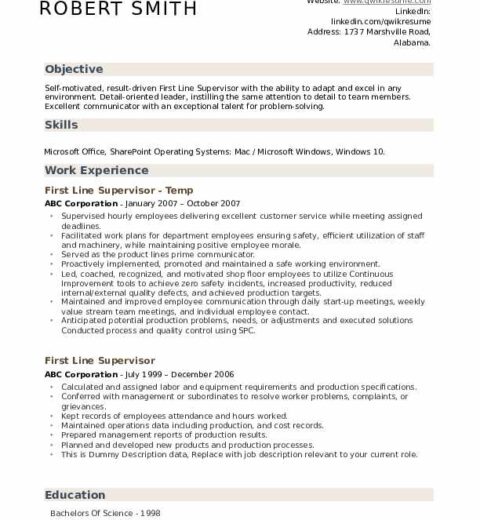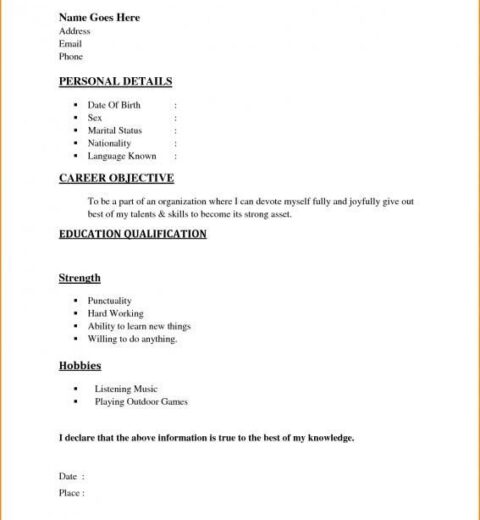Crafting a resume is akin to constructing a finely tuned instrument, each element harmoniously designed to orchestrate an impression that resonates with potential employers. Much like a musician chooses their notes wisely, a job seeker must curate their experiences and skills with precision. A well-crafted resume not only conveys qualifications but also narrates the story of a candidate’s professional journey.
To embark upon the journey of resume crafting, it is essential to start with a clear understanding of the audience. Just as a performer studies the preferences of their audience, a candidate must tailor their resume to meet the expectations of hiring managers and recruiters. Research prominently features in this endeavor. Organizations often possess distinct cultures and values, reflected in their job postings and branding. An insightful candidate will glean these nuances and fashion a resume that resonates with the target company’s ethos.
At the heart of resume construction lies the selection of relevant experiences. Picture a sculptor chiseling away excess stone to reveal a magnificent statue beneath. In the same vein, candidates should distill their work history to showcase only those experiences that align closely with the desired position. Extracting pertinent achievements embodies the principle of quality over quantity. Each bullet point should encapsulate a significant contribution, spotlighting measurable results when possible. Utilizing action verbs—such as “developed,” “implemented,” and “enhanced”—serves to invigorate these statements, transporting the reader into the candidate’s role in their accomplishments.
Equally pivotal is the balance between brevity and detail. A resume should ideally fit onto a single page while maintaining clarity and depth. Like a skilled artist choosing a palette that conveys emotion without overwhelming the viewer, a resume writer needs to be judicious about content. Each sentence must be purposeful, avoiding superfluous language but rich with information. The intent is not to recite a life history but to provide a compelling snapshot of professional capabilities.
As the design of the resume unfolds, visual appeal plays a critical role. A resume is not merely a text document; it is the very first impression a recruiter will have of a candidate. The layout should be clean and professional, creating a seamless flow of information. Strategic use of white space enhances readability and allows key elements to stand out. Furthermore, font choices should reflect professionalism without sacrificing personality. A sophisticated serif font can convey tradition, whereas a sleek sans-serif can suggest modernity. Whichever path is chosen, consistency across the document is crucial, ensuring that the design elements serve the narrative rather than distract from it.
Now, one cannot discuss resume crafting without delving into the importance of the summary statement or objective. This succinct section serves as the prelude to the candidate’s professional symphony. It should encapsulate career aspirations while hinting at the unique skills and experiences that set the candidate apart. Think of it as an appetizer that entices the reader to partake of the main course—the list of experiences and achievements. Crafting this section requires introspection; candidates should ask themselves not only what they hope to achieve but also how their past roles prepare them for the challenges that lie ahead.
Additionally, the inclusion of skills is paramount in today’s technology-driven job market. Hiring managers often use applicant tracking systems (ATS) to filter resumes, making keyword optimization an essential strategy. An elegant balance must be struck between listing hard skills—such as software proficiency and industry-specific knowledge—and soft skills like communication and teamwork. While the former are specific and quantifiable, the latter provide insight into the candidate’s work ethic and style. A resume that melds both categories creates a holistic profile that can intrigue prospective employers.
In the quest for resume perfection, the finishing touches cannot be overlooked. The need for accurate and error-free content cannot be overstated. Typos or grammatical missteps can tarnish an otherwise stellar resume; they act as dissonant notes in a symphony. Proofreading with meticulous attention is essential. Additionally, having a peer or mentor review the document can unveil blind spots and provide invaluable feedback, enhancing overall effectiveness.
Once the resume is polished to satisfaction, the final step is to accompany it with a tailored cover letter. This correspondence acts as a bridge, linking the resume to the job application and personalizing the approach. In the cover letter, candidates can elaborate on key experiences and express their enthusiasm for the role, while also showcasing their knowledge about the company itself. Such dedication illustrates a commitment that hiring managers will find appealing.
In conclusion, crafting a resume is an intricate blend of art and strategy. Like any masterfully curated performance, it requires constant refinement, clear communication, and genuine understanding of the audience’s expectations. Each section must work in unison to create a narrative that not only highlights qualifications but also conveys the candidate’s unique story. Through thoughtful execution and attention to detail, candidates can construct a resume that not only opens doors but also invites opportunity, setting the stage for a successful career journey.




